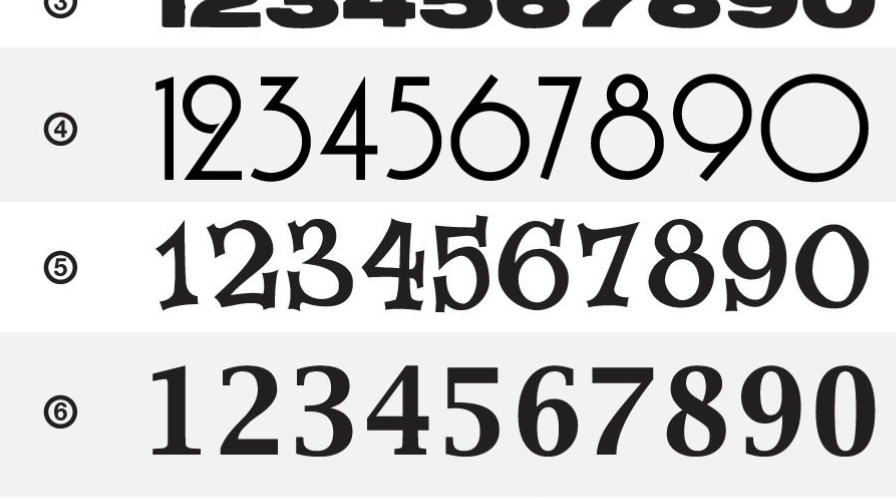Fonts are more than just a way to display text; they are a form of artistic expression that can convey emotions, personality, and style. When it comes to numbers, fonts play an essential role in various aspects of design, from typography and graphic design to branding and advertising. In this article, we’ll dive into the fascinating world of number fonts, exploring their history, significance, and the creative possibilities they offer.
Contents
The History of Number Fonts
Number fonts have a rich history dating back centuries. They have evolved alongside the development of typography and printing technology. Early numeral systems used in Europe were inspired by Roman numerals, and these numbers were often hand-drawn or carved. However, with the invention of the printing press by Johannes Gutenberg in the 15th century, more standardized numeral fonts began to emerge.
In the 18th century, Didone typefaces, characterized by their high contrast between thick and thin strokes, became popular for numbers. These elegant fonts were widely used in books and newspapers of the time. Over the years, various numeral styles emerged, from the ornate and decorative to the practical and straightforward.
The Significance of Number Fonts
Number fonts hold immense significance in various domains:
- Legibility and Readability: In contexts such as books, signage, and user interfaces, legibility is crucial. Clear and easily distinguishable number fonts ensure that information is conveyed accurately and efficiently.
- Branding and Identity: Companies often incorporate specific number fonts into their logos and branding materials. These fonts can become synonymous with the brand itself, creating a strong visual identity.
- Emotional Impact: Different number fonts can evoke distinct emotions. For instance, a bold, modern font might convey strength and innovation, while a classic, serif font can evoke a sense of tradition and heritage.
- Creative Expression: Graphic designers and artists use number fonts creatively to convey a unique message or theme. By selecting the right font, they can enhance the overall visual impact of their work.
Types of Number Fonts
There is a vast array of number fonts available, each with its own unique style. Here are some common categories:
- Serif Fonts: These fonts feature decorative flourishes at the ends of characters. Serif fonts like Times New Roman and Georgia are often associated with tradition and formality.
- Sans-serif Fonts: Known for their clean and modern look, sans-serif fonts like Helvetica and Arial are commonly used in contemporary designs.
- Monospaced Fonts: Monospaced fonts have equal spacing between characters, making them ideal for coding, tabular data, and digital interfaces.
- Script Fonts: Script fonts mimic handwritten cursive writing and add a touch of elegance and personalization to designs.
- Display Fonts: Display fonts are bold, decorative, and attention-grabbing. They are often used in headlines, logos, and posters to create visual impact.
- Stencil Fonts: Stencil fonts have a unique appearance, resembling characters cut out of a template. They are popular for military, industrial, and urban-themed designs.
- Experimental Fonts: Designers frequently create custom or experimental number fonts that push the boundaries of typography, resulting in highly creative and unique styles.
Choosing the Right Number Font
Selecting the appropriate number font depends on the context and the message you want to convey. Consider the following factors when choosing a number font:
- Purpose: Determine the purpose of the numbers. Are they for readability, branding, or artistic expression?
- Audience: Consider the preferences and expectations of your target audience.
- Consistency: Maintain consistency in font choices across your design to create a cohesive look.
- Legibility: Ensure that the numbers are easily readable in the chosen font, especially in smaller sizes.
- Emotion: Think about the emotions or associations that the font conveys and whether they align with your message.
Conclusion
Number fonts are an essential element in design, influencing the way we perceive information and brands. From the elegant serifs of classic typefaces to the bold creativity of display fonts, the world of number fonts offers endless possibilities for designers and artists. Understanding the history and significance of number fonts can help you make informed choices that enhance your designs and effectively communicate your message. So, whether you’re designing a logo, creating a poster, or simply choosing a font for a document, remember that the font you select plays a vital role in shaping perception and aesthetics.
